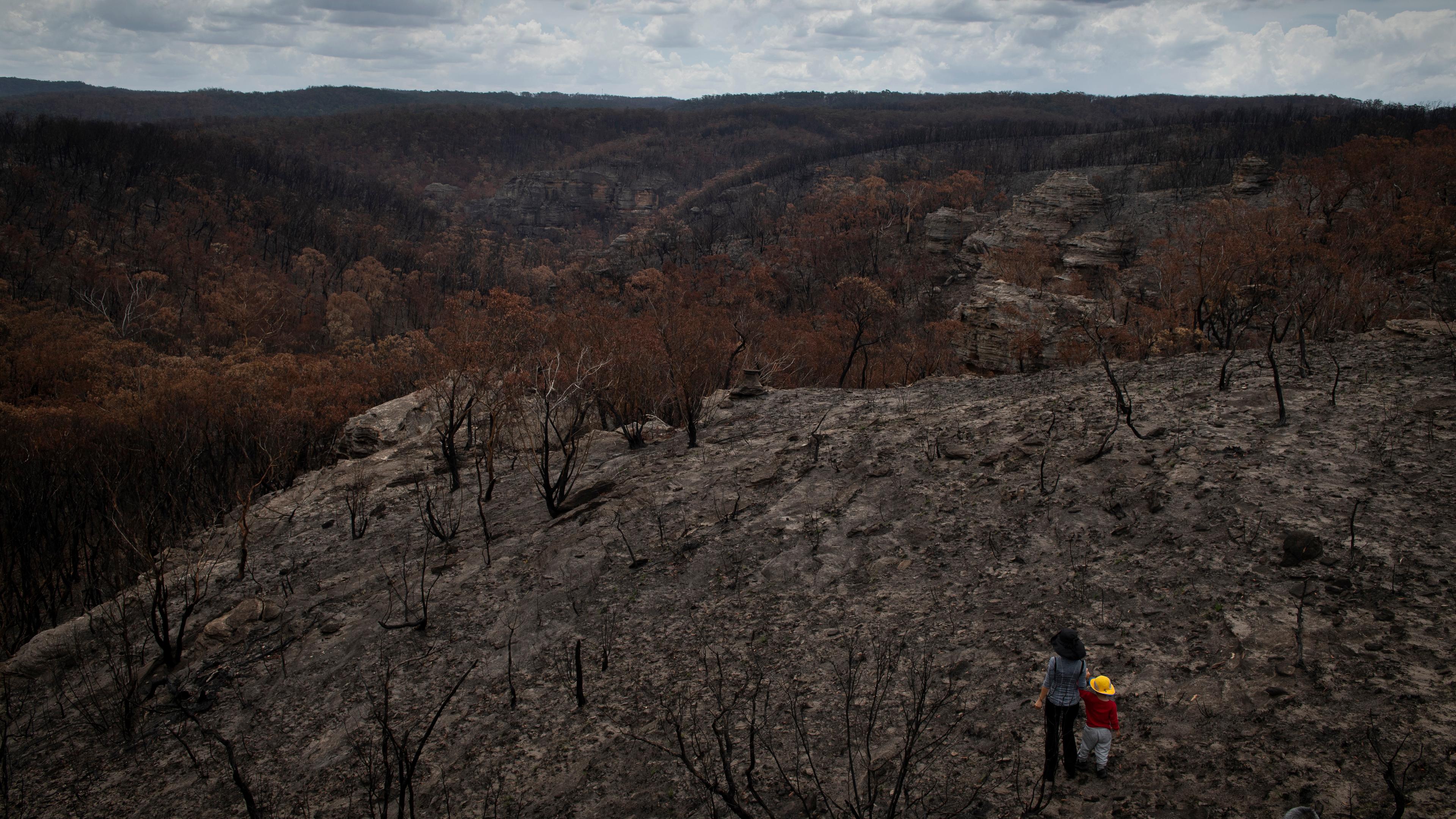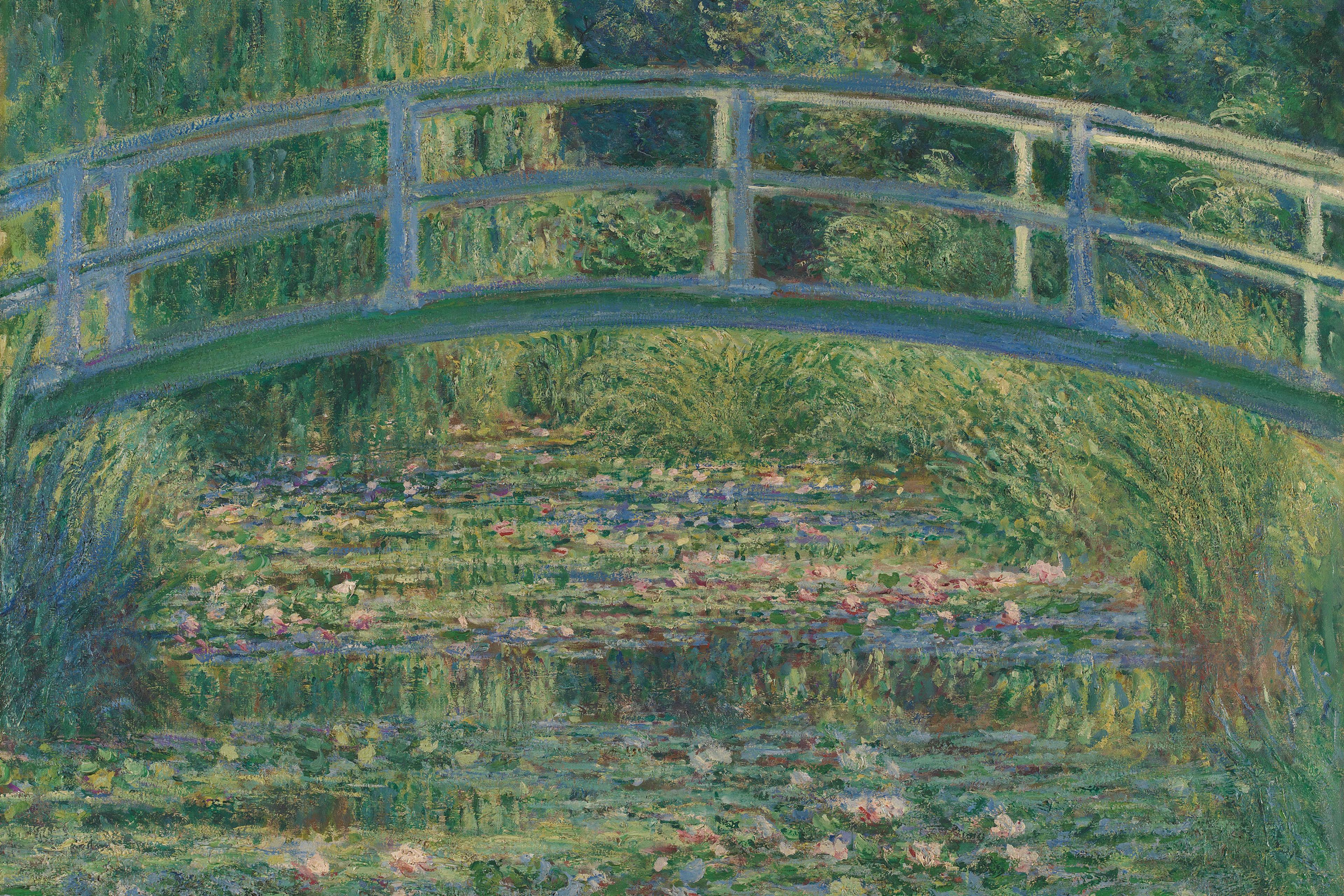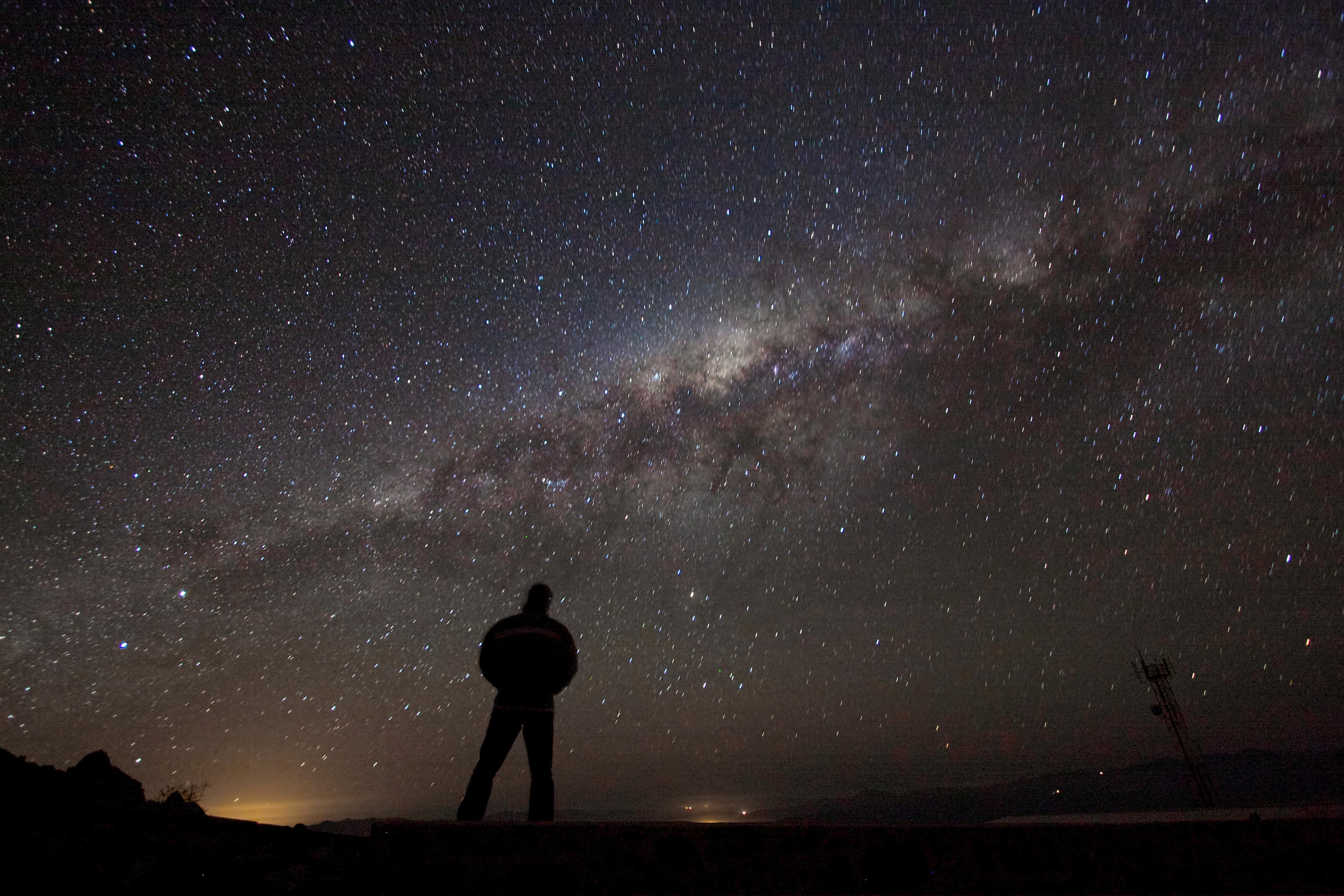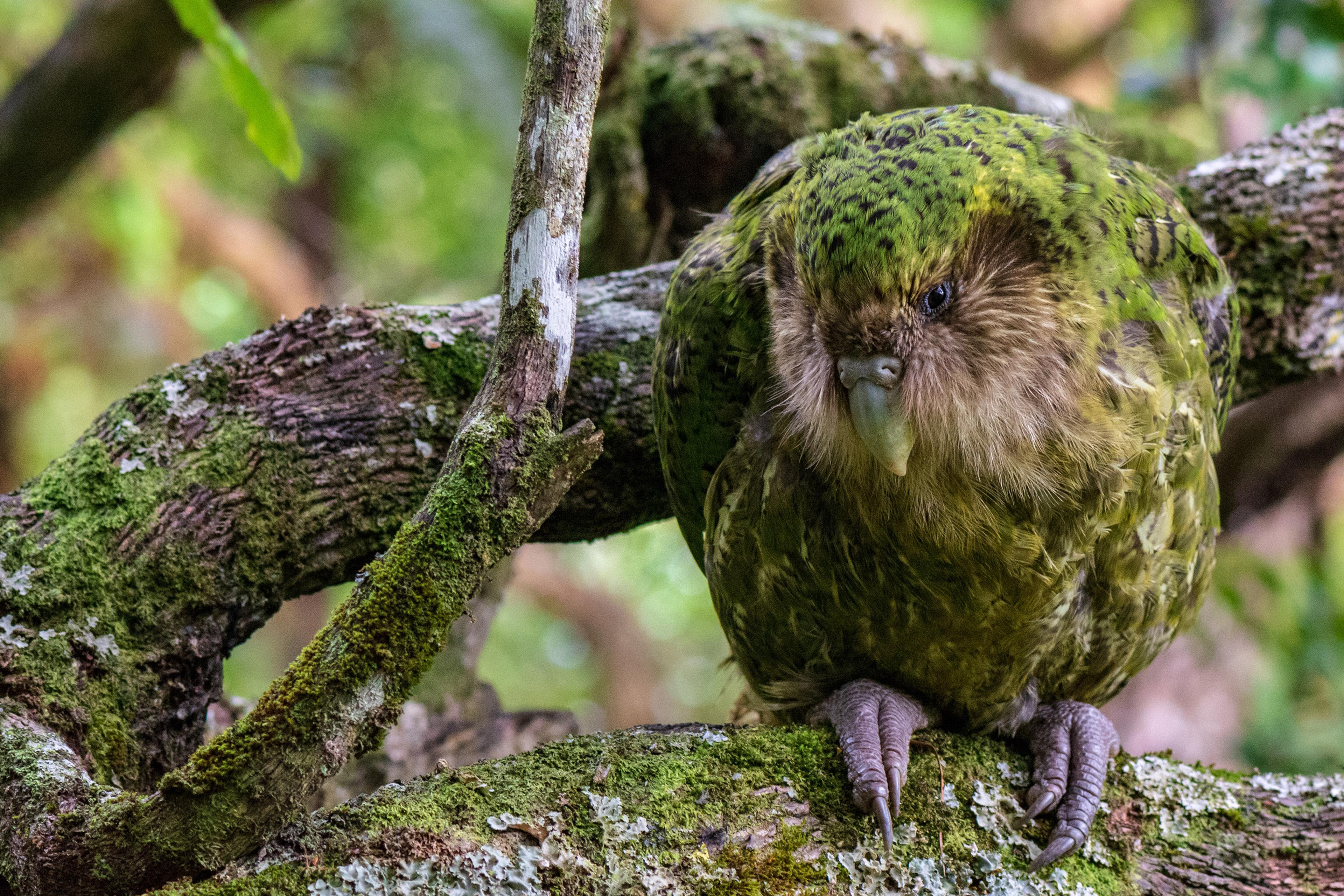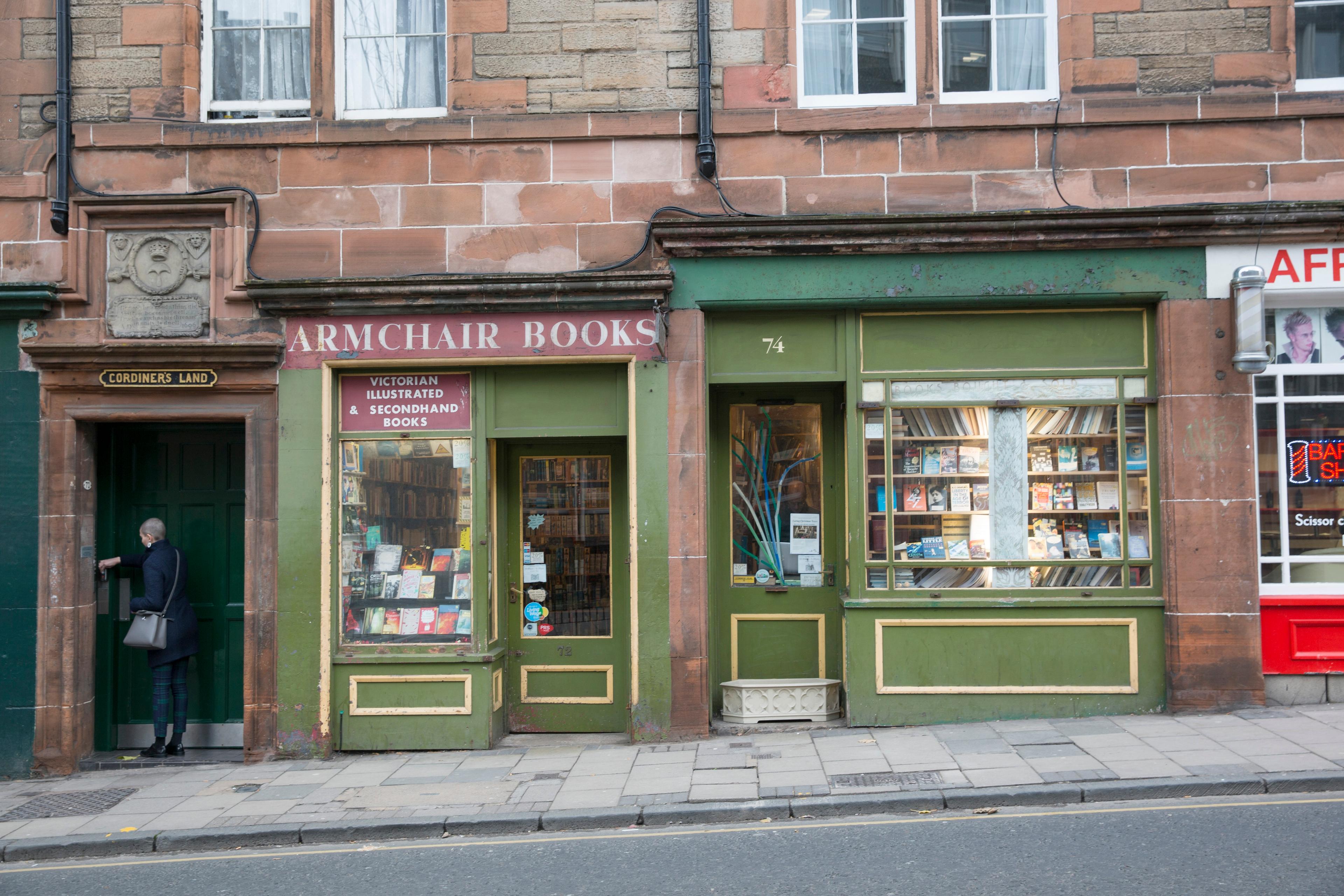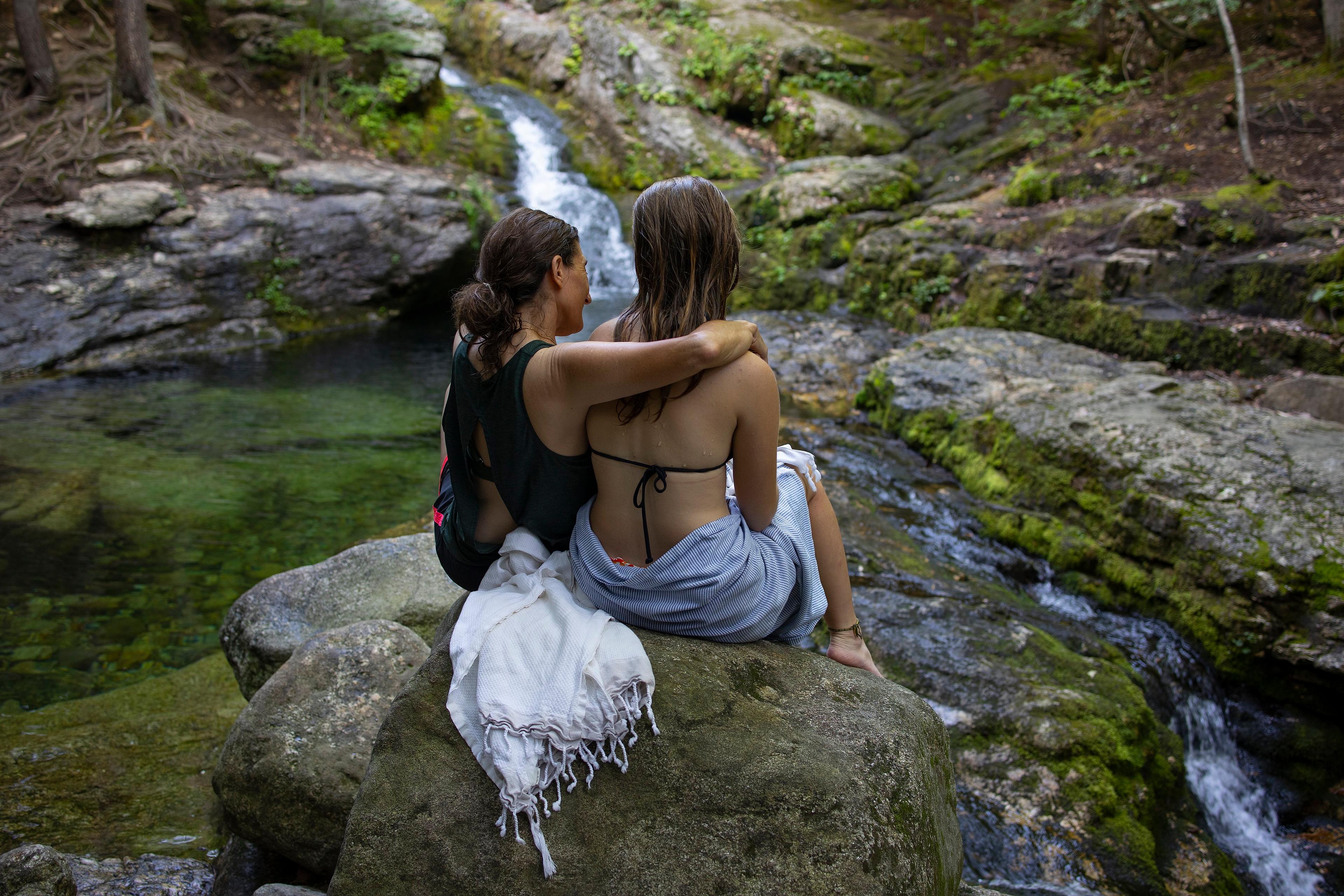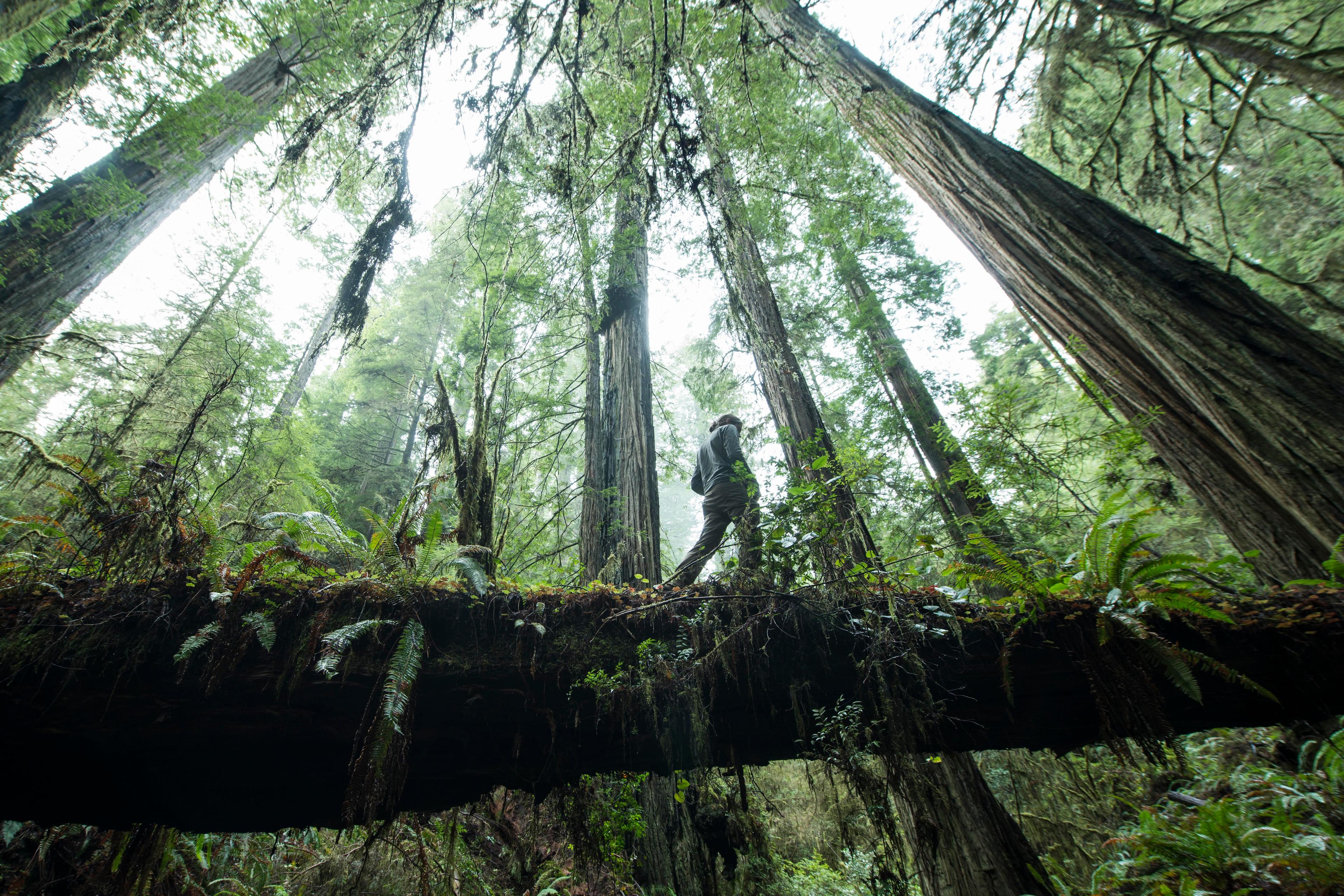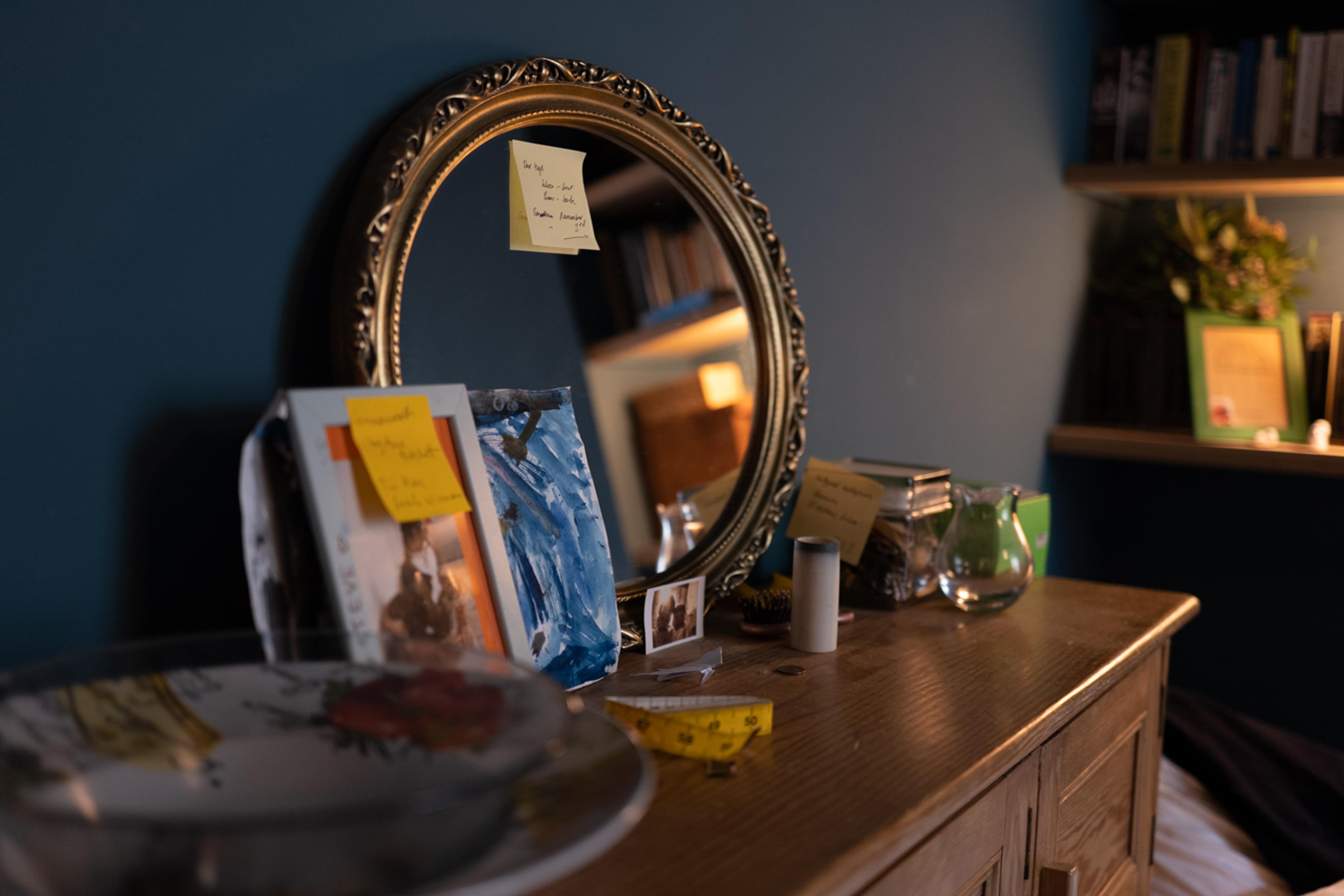The early hominins who watched Pleistocene ice ages flicking on and off saw the coming and going of whole worlds. For roughly 2.5 million years, until around 9700 BCE, they watched sea levels fall, exposing coasts and inlands, then rise, reflooding and sundering land bridges that turned Tasmania and Britain to islands. Glaciers crowned mountain ranges and filled valleys; ice sheets plated over oceans and turned the northern Americas and Eurasia into Antarcticas, then melted into grasslands and forests. Millions of species went extinct; millions of others, humans among them, became climate refugees. Out of these frost-thaw cycles emerged the genus Homo, a creature for whom change was constant. The story of our ancestors is one of new worlds emerging, being made habitable, and even welcomed.
But this time feels different. Earth is being remade in ways and at speeds not experienced before. Unless interrupted, this planetary and civilisational process will overturn one world after another: it promises to remake not only land, sea and air, but economics, science, politics and ethics.
These are known unknowns. Less appreciated is the challenge our remaking of Earth poses to our aesthetics. How can we value and find beauty in a world rapidly delaminating into what almost all observers lament as a spectacle of unremitting loss?
I see the world through a pyric prism. In the reforging of Earth, I see fires, especially those burning fossil fuels, as a cause. I see fires, mutating into megafires, as a consequence – and fires everywhere as a catalyst. The Anthropocene is, for me, a Pyrocene, as humanity’s fire practices create the fire-informed equivalent of an ice age. But fire, and even the charred landscapes it can leave in its wake, is more than an issue of human health, busted ecosystems, creaky institutions or bad behaviour. This is also a matter of aesthetics.
This thought came to me during a field trip to the Jemez Mountains in northern New Mexico in 2014. Three years earlier, the Las Conchas fire, part of a wave train of conflagrations, had blasted across the Pajarito Plateau and into the Los Alamos National Laboratory. When its plume collapsed, the fire sent hot air across forested mesas and through gorges, like the pyroclastic flow from a volcano. The flames culled woods, dappled the forest with blowouts and, in some sites burned down to bare rock, not even blackened stumps remained. Craig Allen, a fire researcher with the US Geological Survey, was our docent, and as we scanned the still-scorched countryside, he described not so much the scene before us as the scene that the fire had taken from him – a vision of the land restored to its precontact state.
Allen was mourning a lost landscape. Settlement in the 19th and early 20th century had degraded the original forests and glades that meant so much to this otherwise arid region. He had spent a professional lifetime studying their history with the idea of restoring them to the conditions they had once known. Now, the landscape was not just scarred but pocked with vaporised patches. The Las Conchas fire had seared the landscape more deeply than anything before – anything recorded in the long chronicle of soil ash and trees scarred from previous burns. It seemed to herald a new fire age that was not simply renewing the old order but fashioning something unprecedented: this was not a restorative fire but a world-overturning one. Personal grief and collective lament seemed the only possible responses.
Yet I wondered what my grandchildren might see if they were present. I recalled a comment by Bertrand Russell who said that what most people mean when they speak of returning to nature is really a desire to return to the world they knew as a child (or, I would add, the world they knew when they came of age). What existed then seems natural. Whatever comes next – new species, new habits, new machines – seems intrusive, disturbing and alien.
That childhood world – what we might call our ‘reference landscape’ – is the marker by which we measure the present and coming world. It’s how we judge the new world as welcoming or hostile, lovely or marred. A reference landscape might be personal, but it might also be shared by a society or nation. When the world itself is being overturned, personal grief can become intergenerational.
My grandkids would encounter the Jemez as it is now; for them, it would exist as a site of origin, not as an endling. They would discover its ecological novelties, relish its nooks of solace, and perhaps thrill to the stark beckoning of charred snags beneath a sunburnt sky. They might regret that the places their elders valued are gone, much as they might lament the disappearance of woolly mammoths and giant ground sloths. Yet the world they live in, not the world that preceded it, is the world that will be imprinted on them. They deserve the opportunity to experience the Jemez on its own terms and theirs, not just as a testament to loss felt by others.
Australia’s Walls of Jerusalem National Park, in the central plateau of Tasmania, is undergoing a similar transformation. In recent years, the park has been overrun with seemingly ‘unprecedented’ conflagrations that have turned sphagnum moss and pencil pine into ash and char.
In 2020, the Australian journalist Jo Chandler visited the plateau to learn about the work of David Bowman, a world-renowned pyrogeographer. ‘The problem with the Anthropocene,’ Bowman told her, ‘is that it can be presented as an end-of-times end, whereas really what it is is a threshold.’ The world isn’t ending, instead it’s ‘going into a new state, things are reassembling.’ I see his view as an inversion of William Faulkner’s quip: ‘The past is never dead. It’s not even past.’ If the past isn’t past, then the future isn’t coming, either – it’s already here.
Chandler wrote that Bowman believed we needed ‘to not see everything through the prism of what we’re losing or have lost.’ Commenting on the ‘blackened trees and singed earth’ around them, high in the plateau, Bowman was blunt and hopeful about the aesthetic prospects for the landscape:
I can look at this and I go, ‘Well, you know it’s changing. It got burnt. It’s sad, but it’s regenerating, and there is going to be life here, and it’s still a beautiful landscape’… Even if all the pines get killed, it’s still beautiful … art somehow survives, people still value things.
Actually, value and art are tightly interconnected: we treasure what we value, and value what we find beautiful. Without a frame, data is just data. How we understand the regeneration of nature will depend on how we regenerate our aesthetics. If we see the future world only through past perspectives, we must see it as loss. We need an appreciation of art suitable for our remade world.
If an aesthetic reboot seems daunting, it is not unprecedented. The history of art and nature is full of shifts in sensibility, subject and technique. The seemingly barren, flat desert interior of Australia shocked British landscape traditions. As industrialisation took us further from dwelling in nature into new forms of habitation, modernism and postmodernism rose in response. The Anthropocene will inspire something comparable. For those just born or coming of age, the process has already begun.
My own landscape of reference dates from the moment when, 18 years old, I found myself on a forest-fire crew at Grand Canyon National Park. The Canyon is one of the world’s iconic scenes, instantly recognisable, but its North Rim was so remote from the suburbs of Phoenix, Arizona as to seem extraterrestrial to me.
We were housed a stone’s throw from its rim; for us, it was where we lived and worked. Yet the more familiar it became – I spent 15 fire seasons on the Rim in all – the odder that appreciation seemed. The Canyon looked like nothing else in the aesthetic tradition of Western civilisation. How and why had this place become so celebrated?
Eventually, I was drawn to the monograph Tertiary History of the Grand Cañon District (1882). The author was Captain Clarence Dutton, a Yale College graduate and Civil War veteran who remained in the regular army, learned geology, and made civilian surveys of the American West over 15 years with the Ordnance Corps.
The book’s purpose was to explain the geologic evolution of the Canyon and to fashion an aesthetic by which to appreciate it. Dutton’s great insight was to accept the unblinking strangeness of the scene. The Canyon was among the earliest of the New World’s natural wonders to be encountered by European explorers: the expedition of the Spanish conquistador Francisco Vázquez de Coronado reached the South Rim in 1540; Franciscan missionaries returned in the 1770s; American fur trappers knew of a ‘Big Canyon’ by the 1830s. But the first expedition to deliberately seek it out, as part of an 1857-58 voyage up the Colorado River for the Army Corps of Topographic Engineers, dismissed the scene as impassable and unassimilable. ‘Ours has been the first, and will doubtless be the last, party of whites to ever visit this profitless locality,’ intoned Lieutenant Joseph Ives. In terms of traditional aesthetic values, he was right.
Dutton accepted Ives’s judgment but inverted it: the scene was valuable precisely because it was so peculiar. ‘The Canyon,’ he proclaimed, ‘is a great innovation in modern ideas of scenery,’ and noted that novelties of any kind require cultivation before they can be appreciated. With the help of the US landscape artists William Henry Holmes and Thomas Moran, Dutton established the terms of aesthetic engagement. Some 40 years later, the place that Ives had dismissed as valueless became in the US president Theodore Roosevelt’s words ‘the one great sight every American should see.’ The Canyon had become ‘Grand’.
I confronted a similar challenge to Dutton’s when I spent a field season in Antarctica between 1981 and ’82. My first two weeks on the ice forced me to admit that my preconceived notions of what the place was and how to understand it were wrong. Trying to put Antarctica into traditional narratives and aesthetic norms made no sense: the ice was sui generis or, worse, a negation that erased everything except itself.
Antarctica, it seemed, proposed another great innovation in our modern ideas of scenery. It demanded a different narrative of discovery, and it deserved an aesthetic that spoke to its distinctive character, not one that tried to trim and chisel it into inherited formulas. The shock I experienced at the Canyon’s Rim appeared again in Antarctica. When I wrote The Ice (1986), a survey of that frozen landscape, I took Dutton as a guide.
The aesthetic challenge posed by the Pyrocene goes beyond adjusting artistic values to a novel scene of nature, or finding ways to ‘naturalise’ a built landscape by adapting the aesthetics of mountains to skyscrapers. We are not hominins adjusting notions of value to continent-sized upheavals imposed by changes in solar radiation. We are, instead, the agents who are overturning an existing natural order. We are unreliable narrators evaluating not deliberate works of our own creation, shaped with some hint of aesthetic intention, but the unintended consequences of our relentless disruptions. It’s hard not to look at trashed rainforests, bleached coral reefs, and landscapes covered in asphalt and plastics and not echo Lt Ives’s comment that such scenes are ‘profitless’ localities and are, aesthetically, not worth a second look.
But Dutton will be proved right in the end. It’s not the character of the scene, it’s the character of the seeing that will determine worth. We have an abundance of ‘innovations’ in modern scenery that await the right interpreters. They will come from my grandkids’ generation.
During my second season smokechasing fires on the Canyon’s rim, a reformation in fire policy sought to restore fire to places starved of it, and we began deliberately burning areas to help regenerate the trees (pine, aspen) and grasses (muhly, fescue). Over time, I learned to see burned landscapes differently – black belonged with green; open patches and fractured forests enhanced sombre monocultures of woods. Burned landscapes were not only ecologically significant: I came to realise they could be attractive, too. But I now struggle to see our planetary scorching in similar ways.
While I came to appreciate ice, could even exult in its terrible simplicity, I found it inhumane and hostile, an aesthetics of erasure. Likewise, I don’t expect to enthuse over all that the Pyrocene contrives. I anticipate holding on to what I can, mourning what is lost, and grumbling about what truly merits to be considered lovely or picturesque.
A robust aesthetics for our age – Pyrocene, Anthropocene, or otherwise – is a task for my children and grandchildren. They deserve a better world than they are getting, but they also deserve the right to see that world for themselves, not just as a worn-out, hand-me-down planet devoid of its former glory and sublimity. My experience assures them it can be done. I can also tell them it won’t be easy.
